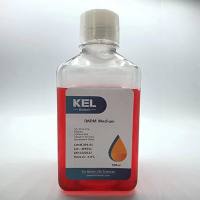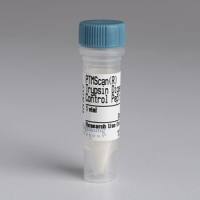Preparing a Minimum Information about a Flow Cytometry Experiment (MIFlowCyt) Compliant Manuscript Using the International Society for Advancement of
互联网
- Abstract
- Table of Contents
- Materials
- Figures
- Literature Cited
Abstract
FlowRepository.org is a Web?based flow cytometry data repository provided by the International Society for Advancement of Cytometry (ISAC). It supports storage, annotation, analysis, and sharing of flow cytometry datasets. A fundamental tenet of scientific research is that published results should be open to independent validation and refutation. With FlowRepository, researchers can annotate their datasets in compliance with the Minimum Information about a Flow Cytometry Experiment (MIFlowCyt) standard, thus greatly facilitating third?party interpretation of their data. In this unit, we will mainly focus on the deposition, sharing, and annotation of flow cytometry data. Curr. Protoc. Cytom. 61:10.18.1?10.18.26. © 2012 by John Wiley & Sons, Inc.
Keywords: data repository; data sharing; minimum information; annotation; flow cytometry
Table of Contents
- Introduction
- Basic Protocol 1: FlowRepository Public Data Retrieval
- Basic Protocol 2: FlowRepository Data Upload and Annotation
- Commentary
- Literature Cited
- Figures
Materials
Basic Protocol 1: FlowRepository Public Data Retrieval
Materials
Basic Protocol 2: FlowRepository Data Upload and Annotation
Materials
|
Figures
-
Figure 10.18.1 FlowRepository—landing page. The landing page of FlowRepository allows users to quickly browse or query public datasets. View Image -
Figure 10.18.2 Result of a query. Repository queries return a list of matching datasets. View Image -
Figure 10.18.3 Dataset download. The download box includes links for downloading FCS files, illustrations, attachment, and gating. Downloading FCS files starts a Java applet where users select the download location (i.e., a folder locally on their computer) and which data files to download. View Image -
Figure 10.18.4 List of experiment FCS files. The advanced experiment view lists FCS files including details, such as staining panel assignment, experiment variables, tube identification, number of events, and size of the data file. Additional details may be displayed by clicking on the details link near each of the FCS file name. View Image -
Figure 10.18.5 MIFlowCyt compliance details. Provided and missing information are summarized for each section of MIFlowCyt; additional details may be expanded by clicking on the check mark symbols. Mousing over the “i” in the top right corner displays more information about MIFlowCyt score calculation. View Image -
Figure 10.18.6 New experiment form. Basic experimental metadata should be provided for each new dataset as required by MIFlowCyt. View Image -
Figure 10.18.7 FCS file categorization. FlowRepository will automatically assign FCS files into experimental files, compensation controls, and other controls. Users may adjust the categorization if needed. View Image -
Figure 10.18.8 FCS panel assignment. FlowRepository will assign FCS files to staining panels based on distinct groups of markers detected in the data. Users may adjust these assignments and rename, add, or delete panels if needed. View Image -
Figure 10.18.9 Reagents available for annotation. Users describe available reagents in the annotation data section. Later on, samples can be annotated with these reagents. View Image -
Figure 10.18.10 New reagent form. Reagent details should be provided as required by MIFlowCyt. View Image -
Figure 10.18.11 Adding an organism from the NCBI taxonomy. Suggestions will be displayed after three or more characters are typed. View Image -
Figure 10.18.12 Creation of a biological sample source template. Required fields will change dynamically based on the type of sample source specified. Values provided in a template may be adjusted when the template is used to annotate specific samples. View Image -
Figure 10.18.13 Application of a reagent. The characteristic being measured should be specified when samples (or templates) are annotated with reagents, since the same reagent could be used for slightly different purposes in different experiments. View Image -
Figure 10.18.14 Setting up experimental variables. Experimental variables are defined and assigned in the illustration creation section. View Image -
Figure 10.18.15 Conditions assignment. Experimental variables (e.g., sample stimulation conditions) can be assigned to FCS files by dragging and dropping the file labels to appropriate boxes. View Image -
Figure 10.18.16 Description of instrumentation settings. The dialog window is asking for details as required by MIFlowCyt. Consequently, it will be significantly simplified if default instrumentation settings are used. View Image -
Figure 10.18.17 Definition of optical path. An optical path can be defined by dragging and dropping its components into an ordered list in the yellow box. Details about each component need to be provided prior saving the optical path. View Image -
Figure 10.18.18 MIFlowCyt compliance review of own experiments. An additional column with references to improve the annotation is provided if applicable. View Image
Videos
Literature Cited
| Bashashati, A. and Brinkman, R.R. 2009. A survey of flow cytometry data analysis methods. Adv. Bioinformatics 584603. | |
| Blimkie, D., Fortuno, E.S. 3rd, Thommai, F., Xu, L., Fernandes, E., Crabtree, J., Rein‐Weston, A., Jansen, K., Brinkman, R.R., and Kollmann, T.R. 2010. Identification of B cells through negative gating: An example of the MIFlowCyt standard applied. Cytometry A 77:546‐551. | |
| Bocsi, J. and Tárnok, A. 2008. Toward automation of flow data analysis. Cytometry A 73:679‐680. | |
| Burgoon, L.D. 2006. The need for standards, not guidelines, in biological data reporting and sharing. Nat. Biotechnol. 24:1369‐1373. | |
| Field, D., Sansone, S., Collis, A., Booth, T., Dukes, P., Gregurick, S.K., Kennedy, K., Kolar, P., Kolker, E., Maxon, M., Millard, S., Mugabushaka, A., Perrin, N., Remacle, J.E., Remington, K., Rocca‐Serra, P., Taylor, C.F., Thorley, M., Tiwari, B., and Wilbanks, J. 2009. 'omics data sharing. Science 326:234‐236. | |
| Harrelson, J.M. and Falletta, J.M. 2007. The privacy rule (HIPAA) as it relates to clinical research. Cancer Treat. Res. 132:199‐207. | |
| Ioannidis, J.P., Allison, D.B., Ball, C.A., Coulibaly, I., Cui., X., Culhane, A.C., Falchi., M., Furlanello, C., Game, L., Jurman, G., Mangion, J., Mehta, T., Nitzberg, M., Page, G.P., Petretto, E., and van Noort, V. 2009. Repeatability of published microarray gene expression analyses. Nat. Genet. 41:149‐55. | |
| Lee, J.A., Spidlen, J., Boyce, K., Cai, J., Crosbie, N., Dalphin, M., Furlong, J., Gasparetto, M., Goldberg, M., Goralczyk, E.M., Hyun, B., Jansen, K., Kollmann, T., Kong, M., Leif, R., McWeeney, S., Moloshok, T.D., Moore, W., Nolan, G., Nolan, J., Nikolich‐Zugich, J., Parrish, D., Purcell, B., Qian, Y., Selvaraj, B., Smith, C., Tchuvatkina, O., Wertheimer, A., Wilkinson, P., Wilson, C., Wood, J., Zigon, R., Scheuermann, R.H., and Brinkman, R.R. 2008. MIFlowCyt: The Minimum Information about a Flow Cytometry Experiment. Cytometry A 73:926‐930. | |
| Lugli, E., Roederer, M., and Cossarizza, A. 2010. Data analysis in flow cytometry: The future just started. Cytometry A 77:705‐713. | |
| Spidlen, J., Leif, R.C., Moore, W., Roederer, M., and Brinkman, R.R. 2008. Gating‐ML: XML‐based gating descriptions in flow cytometry. Cytometry A 73:1151‐1157. | |
| Spidlen, J., Moore, W., Parks, D., Goldberg, M., Bray, C., Bierre, P., Gorombey, P., Hyun, B., Hubbard, M., Lange, S., Lefebvre, R., Leif, R., Novo, D., Ostruszka, L., Treister, A., Wood, J., Murphy, R.F., Roederer, M., Sudar, D., Zigon, R., and Brinkman, R.R. 2010. Data File Standard for Flow Cytometry, version FCS 3.1. Cytometry A 77:97‐100. | |
| Taylor, C.F., Field, D., Sansone, S.A., Aerts, J., Apweiler, R., Ashburner, M., Ball, C.A., Binz, P.A., Bogue, M., Booth, T., Brazma, A., Brinkman, R.R., Michael Clark, A., Deutsch, E.W., Fiehn, O., Fostel, J., Ghazal, P., Gibson, F., Gray, T., Grimes, G., Hancock, J.M., Hardy, N.W., Hermjakob, H., Julian, R.K. Jr., Kane, M., Kettner, C., Kinsinger, C., Kolker, E., Kuiper, M., Le Novère, N., Leebens‐Mack, J., Lewis, S.E., Lord, P., Mallon, A.M., Marthandan, N., Masuya, H., McNally, R., Mehrle, A., Morrison, N., Orchard, S., Quackenbush, J., Reecy, J.M., Robertson, D.G., Rocca‐Serra, P., Rodriguez, H., Rosenfelder, H., Santoyo‐Lopez, J., Scheuermann, R.H., Schober, D., Smith, B., Snape, J., Stoeckert, C.J. Jr, Tipton, K., Sterk, P., Untergasser, A., Vandesompele, J., and Wiemann, S. 2008. Promoting coherent minimum reporting guidelines for biological and biomedical investigations: The MIBBI project. Nat. Biotechnol. 26:889‐896. | |
| Key References | |
| Lee et al., 2008. | |
| This reference contains the full normative text of the MIFlowCyt specification, which specifies the required minimal annotation for publishing flow cytometry experiments. Reviewing MIFlowCyt will provide readers with additional clarification of what metadata to provide when describing their datasets. | |
| Kotecha, N., Krutzik, P.O., and Irish, J.M. 2010. Web‐based analysis and publication of flow cytometry experiments. Curr. Protoc. Cytom. 53:10.17.1‐10.17.24. | |
| This reference describes several protocols to publish, analyze, and share flow cytometry data using Cytobank. Since FlowRepository is built on top of the Cytobank platform, most of the procedures described in these protocols are also applicable for FlowRepository. Therefore, this reference provides additional resources and guidelines for FlowRepository users. | |
| Internet Resources | |
| https://flowrepository.org/ | |
| This is the home page of FlowRepository, with links for browsing and querying public datasets, logging in, registration, user's guides and recent documentation. | |
| http://www.mozilla.org/ | |
| This is the home page of Mozilla with links to obtain the latest version of Firefox. Firefox is the recommended Web browser for FlowRepository. | |
| http://javatester.org/version.html | |
| Java Tester is a Web page that helps you verify your ability to run Java applets in your Web browser, as well as the version of Java that your Web browser is using. The ability to run Java version 1.5.1 or higher is a requirement for accessing FlowRepository. Java version 1.6 or higher is recommended. | |
| http://www.java.com/ | |
| Java download page; Windows users should use this page to obtain or update Java if needed. | |
| http://openid.net/get‐an‐openid/ | |
| An OpenID Web site helps to determine whether you have an OpenID already and suggests options in case you need to obtain one. FlowRepository requires an OpenID in order to deposit and annotate datasets, analyze data online, and perform additional advanced tasks. | |
| http://docs.cytobank.org/ | |
| The documentation site for Cytobank; most of the Cytobank documentation is also applicable for FlowRepository since FlowRepository is built on top of the Cytobank platform. |








